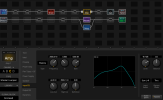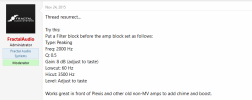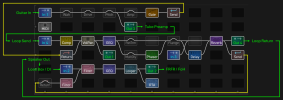Guitar1234
Member
How important is it to adjust the output eq to get a good monitor tone from an FRFR? I assumed it was best to leave the output eq flat and sculpt the tone from the amp block and an eq in the chain, but I recently added some low end and high end to get some more presence and thought maybe the result was different than adding it elsewhere in the chain. Is that just my imagination? What are your approaches to managing the EQ and different stages of the signal chain?




